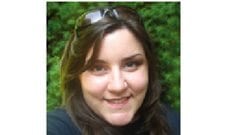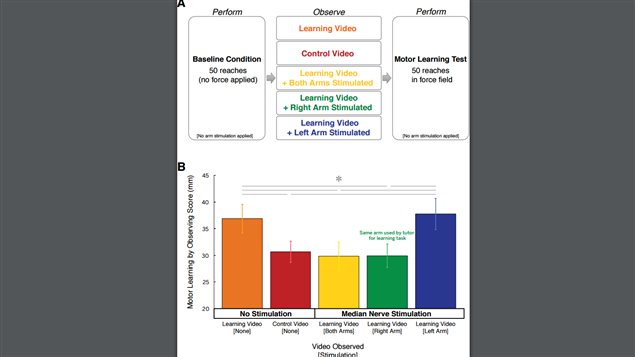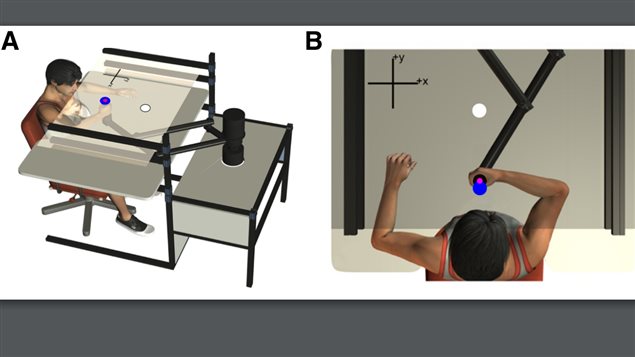We watch someone demonstrating an action, and then we repeat it. But in doing so we are “learning” that action. But it’s a very complex process.
Recent research has uncovered a bit more of this learning process.
Heather McGregor is lead author of the research, and a PhD candidate in neuroscience at the University of Western Ontario Brain and Mind Institute
Listen
The research was published in the scientific journal “Current Biology” under the title, Functional Plasticity in Somatosensory Cortex Supports Motor Learning by Observing
While we have long known that we learn by observing others and then imitating the action, and that such observance stimulates many brain areas involved in actually creating the movements.
What was not known was the link between observing and action facilitates learning.
What they found was an important activity in the somatosensory cortex, which is part of the brain involved in the sense of touch.
The experiments add to understanding of how visual information gathered from the actions of others facilitates motor skill learning. It also gives new insight into the role of this area of the brain in mapping visual information from a tutor’s actions and transferring that into the observer’s own motor system in the process of learning.
McGregor says this new information could, after further development, be used in clinical situations to help in the rehabilitation of stroke victims.

Experiment1 above:
- In the baseline condition, all participants held onto the handle of the robotic arm with the right hand and performed straight reaches to a visual target while the robot applied no force on the hand. Participants then observed either a learning video or a control video. The learning video showed a tutor learning to reach in a force field using the robotic arm. The control video showed a tutor performing curved reaches using the robotic arm but not undergoing learning. During observation, subjects received nerve stimulation to both arms simultaneously, to the right arm only (same arm used by the tutor), to the left arm only (opposite to the arm used by the tutor) or no stimulation. Finally, as a motor learning test, all subjects performed the reaching task while the robotic arm applied a force field.
- Motor learning by observing scores from the motor learning test. Participants who observed the learning video without stimulation (orange) achieved greater learning compared to participants who did not observe learning (red). Nerve stimulation applied to both arms simultaneously (yellow) and to the right arm only (same arm used by tutor, green) during observation disrupted learning. In contrast, subjects who received nerve stimulation to the left arm only (opposite to arm used by tutor, blue) were still able to learn from observation. This suggests that motor learning by observing depends on activity in the part of the somatosensory cortex that deals with the specific limb that was used by the tutor for the learning task.

Experiment 2 above:
- Experiment 2 used the same reaching task as in Experiment 1. In the baseline condition, all participants performed straight reaches to a visual target using the robotic arm when no force was applied. We assessed somatosensory cortex (S1) activity immediately before and after subjects observed either the learning video (purple) or the control video (cyan). Finally, all subjects performed a motor learning test to behaviorally assess motor learning by observing.
- S1 activity was recorded using an EEG electrode over left S1 while participants rested.
- S1 activity increased in those participants who observed the tutor undergoing learning. There were no changes in S1 activity in participants who observed tutor performing movements but not learning.
- For the learning group, participants who showed greater increases in S1 activity after observing the tutor learning achieved greater motor learning. This experiment suggests that activity changes in somatosensory cortex support motor learning by observing.







For reasons beyond our control, and for an undetermined period of time, our comment section is now closed. However, our social networks remain open to your contributions.